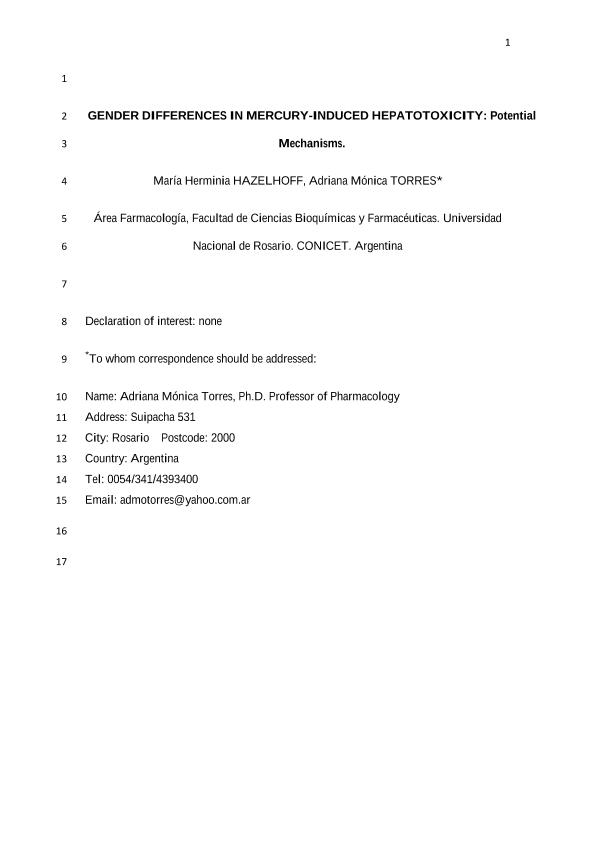Artículo
Gender differences in mercury-induced hepatotoxicity: Potential mechanisms
Fecha de publicación:
07/2018
Editorial:
Pergamon-Elsevier Science Ltd
Revista:
Chemosphere
ISSN:
0045-6535
Idioma:
Inglés
Tipo de recurso:
Artículo publicado
Clasificación temática:
Resumen
The accumulation of mercury in the liver causes hepatotoxicity. The organic anion transporter 3 (Oat3) and the multidrug-resistance associated protein 2 (Mrp2) are involved in the hepatic excretion of toxins and drugs and in the hepatic handling of mercury. The aim of this work was to study if there are gender-related differences in mercuric chloride (HgCl2)-induced hepatotoxicity in rats. Total mercury levels and protein expressions of Oat3 and Mrp2 in liver samples were also assessed to clarify the mechanisms underlying mercury-induced liver damage in male and female rats. Control and HgCl2-treated male and female Wistar rats were used. Hepatotoxicity was evaluated by plasma activity of transaminases and alkaline phosphatase, as well as by histopathological analysis. Oat3 and Mrp2 expression was assessed by immunoblotting. Female rats displayed a higher HgCl2-induced hepatotoxicity than male rats as demonstrated by the higher alterations in the plasma markers of liver damage and in the histopathology. The sex-related differences observed in the hepatic damage can be explained by the higher accumulation of mercury in liver from female rats. In this connection, after mercury treatment the expression of Mrp2 decreased in both sexes and the expression of Oat3 decreased only in males. The decreased in Oat3 abundance in the hepatocytes membranes in mercury-treated males would limit the uptake of mercuric ions into the liver protecting them from mercury hepatotoxicity.
Palabras clave:
HEPATOTOXICITY
,
MERCURIC CHLORIDE
,
MRP2
,
OAT3
,
RATS
,
SEX DIFFERENCES
Archivos asociados
Licencia
Identificadores
Colecciones
Articulos(CCT - ROSARIO)
Articulos de CTRO.CIENTIFICO TECNOL.CONICET - ROSARIO
Articulos de CTRO.CIENTIFICO TECNOL.CONICET - ROSARIO
Citación
Hazelhoff, Maria Herminia; Torres, Adriana Monica; Gender differences in mercury-induced hepatotoxicity: Potential mechanisms; Pergamon-Elsevier Science Ltd; Chemosphere; 202; 7-2018; 330-338
Compartir
Altmétricas




